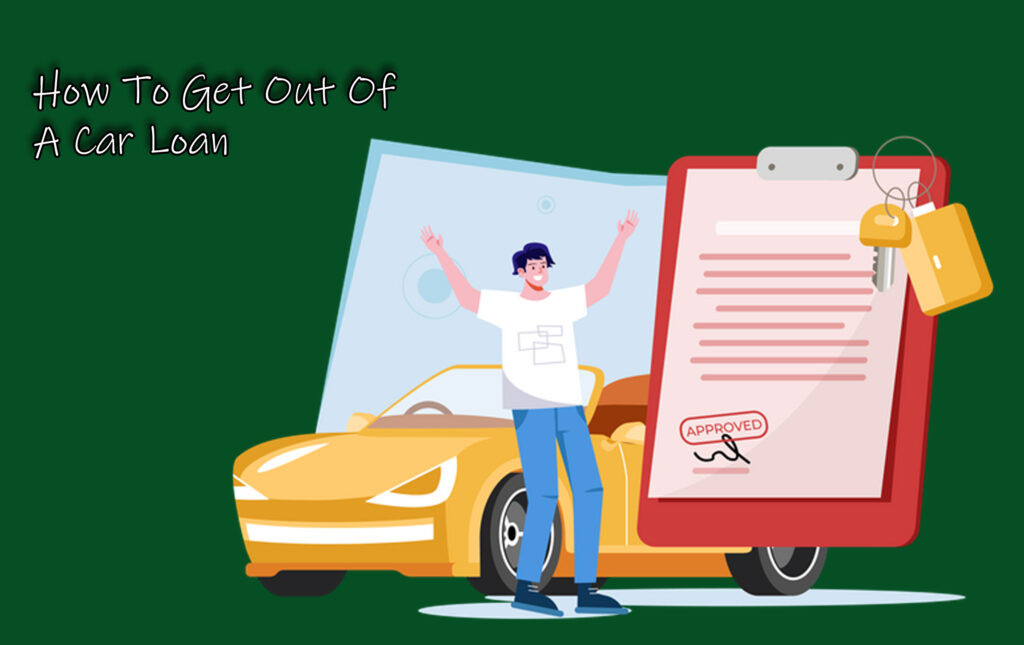How to Get Out of a Car Loan – Having a car loan is one of the most common ways people are able to financially claim ownership of their vehicle. However, this same car loan can quickly become a financial burden if circumstances change.

Whether it’s due to a job loss, rising expenses, high interest rates, or simply realizing the car isn’t worth the monthly payments, many people find themselves asking: “How exactly can I get out of this car loan?”.
Fortunately, there are several options available, each with its pros, cons, and financial implications. The key is understanding which strategy works best for your unique situation.
Getting out of a car loan doesn’t always mean walking away from your financial obligations. Instead, it means finding smarter ways to resolve or restructure the debt so that you can regain control of your finances. Let’s look at some of the ways one can get out of a car loan:
Sell The Car And Pay Off the Loan
One of the most straightforward ways to get out of a car loan is by selling the vehicle and using the payments to pay off the remaining balance.
This works best when the car’s market value is equal to or higher than what you owe on the loan. Some of the best steps you can take includes:
- Determining the car’s current market value using available tools online
- Contact your lender to find out the payoff amount.
- List the car for private sale (usually higher value than trade-in).
- Once sold, use the proceeds to pay off the loan.
If the sale price is lower than what you owe, you’ll need to pay the difference out-of-pocket to close the loan.
Trade In The Car For A More Affordable Option
If selling your car privately feels too time-consuming, trading it in at a dealership is another option. However, be very cautious because dealers often offer less than private buyers, which could leave you with negative equity. Some steps you can take include:
- Use the car’s trade-in value toward a less expensive vehicle.
- The remaining loan balance, if any, can be rolled into the new loan (not ideal).
- This option can provide relief through lower monthly payments, but increases long-term debt if not managed carefully.
Trading in works best if you’re not upside-down on your loan or if the dealership offers attractive trade-in incentives.
Refinance The Car Loan
If your main issue is having to deal with the high monthly payments or interest rates, then refinancing might be the perfect solution to explore. Refinancing involves taking out a new loan—ideally with better terms—to pay off the existing one. Additionally, when you refinance, it leads to lower interest rates from reduced monthly payments. You also get improved credit, smaller payments from extended loan term and more.
Before refinancing, compare offers from banks, credit unions, and online lenders. Also, you must make sure your current loan doesn’t have prepayment penalties.
Transfer The Loan To Someone Else
Some lenders allow loan assumption or transfer; this is when another person takes over your payments and ownership of the car. This is rare, but possible depending on your lender’s policies and the creditworthiness of the new borrower.
You can find a buyer who’s willing to take over the car and payments and ensure all paperwork is legally transferred to avoid liability.
Loan transfers are uncommon but can be a clean exit strategy if approved by the lender.
Voluntarily Surrender The Car
Another last resort you can take up as a solution is by voluntarily surrendering the car. This will greatly if you’re severely behind on payments and none of the above options are feasible.
This involves giving the car back to the lender before they repossess it. Here are some important things you must still know:
- It negatively affects your credit score, though usually less damaging than a forced repossession.
- You’ll still owe the difference between the car’s auction value and your loan balance.
- This should only be a last resort after you’ve explored all other options.
Contact your lender and explain your situation before surrendering. Some may offer temporary relief or payment assistance.



